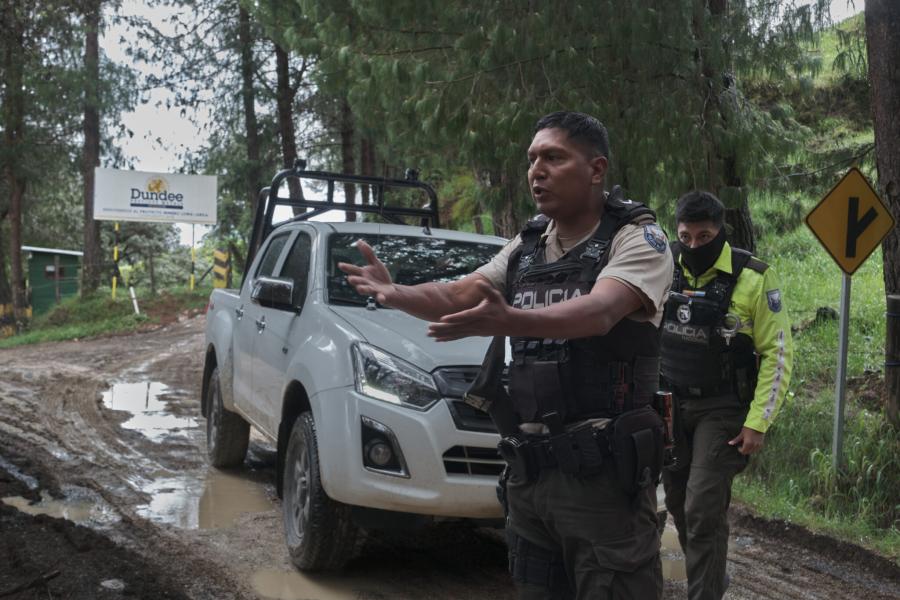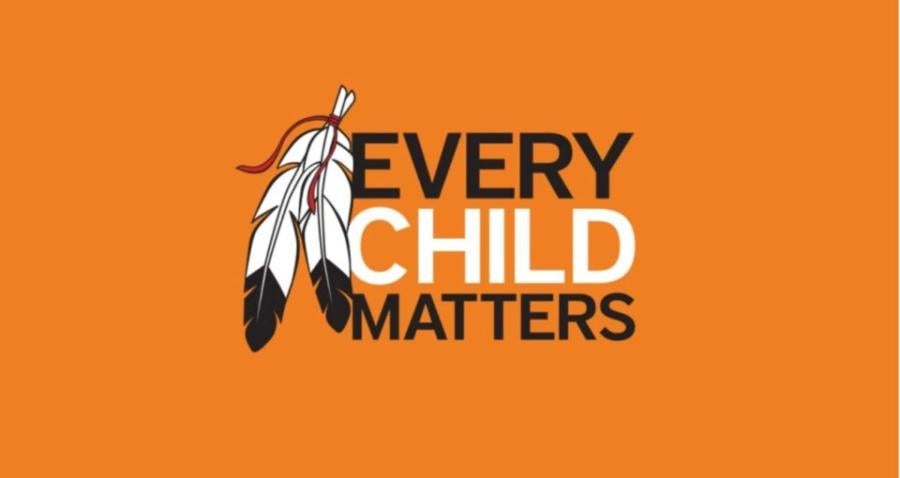Indigenous peoples have relied on oral tradition to communicate ideals, morals, and life lessons since time immemorial. Kept among blood relations, such a mechanism for maintaining traditional knowledge is ingenious, portable, and indestructible, unless the community that holds the knowledge is wiped out.
In the last 500 years, aboriginal peoples have survived the onslaught of worldwide colonialism. In North America the slaughter of our ancestors is quietly called a Holocaust. The atomic blast of cultural genocide known as assimilation has had varying degrees of fallout; we see it every day in our communities. With the passing of our elders, little by little their wisdom goes with them. But rather than lay blame, we must reclaim responsibility in the way we tell our stories and communicate the tenets our ancestors recited millennia before. Filmmaking has given us a means through which we can keep our stories alive and have them be heard by a wide audience.
Before he was hanged for treason against the Canadian government in 1885, Métis leader Louis Riel prophesized a renaissance would take place, and that aboriginal peoples would lead it through artistic expression. Riel predicted this renaissance would take more than a century. That renaissance is happening now, and Natives are starting to realize it as more of us find the courage to speak up and express ourselves without fear of persecution, imprisonment, or death.
With the advent of new digital technologies, the tools to express oneself are more accessible. On the other hand, the logistics are enormous and so too are the associated costs. The scope and scale of filmmaking projects grow, particularly for feature films in U.S. studios, and financing becomes even harder to find. Even Michael Moore, who had previous success as a filmmaker with Roger and Me and Bowling for Columbine, could not find money for his films in the United States and had to come to Canada to produce Fahrenheit 9/11, a controversial independent feature film. Imagine the challenge of finding support for films that American Indians want to make about the darker side of North America’s colonial past.
Today film and television are the most powerful communication media on the planet. Yet too often, indigenous peoples have been portrayed as villains in Hollywood westerns or dark-skinned savages in some remote corner of the globe. But slowly some feature films have begun to identify indigenous peoples as emotional, sensitive beings capable of intelligent thought and discourse.
Sadly, only six major feature films about indigenous peoples have generated notable revenue at the box office: Little Big Man, Dances With Wolves, Whale Rider, Once Were Warriors, Atanarjuat (The Fast Runner), and Rabbit Proof Fence. Three of these films were made in North America; none were produced solely by indigenous filmmakers (although the director of Atanarjuat was Inuit Zach Kunuk). Much discussion has been had about how much better such films might have been had they been made and controlled with an aboriginal sensibility, knowledge, and perspective. A person unconnected to a culture cannot fully know the impact left by ancestors having suffered, starved, or died at the hands of the people the well-intentioned filmmaker has come from. It is impossible for a non-Native to fully understand why a story is important and the value it holds in the traditional community, and so allowing people from the community to participate in production is essential. While each of these movies had positive elements, they lacked the Native voice that could have allowed them to fully tell their stories (Native dialogue often loses significance when translated to English) and have the emotional impact the stories deserve. Rabbit Proof Fence had the opportunity to really shine and reinforce what the Aboriginal people of Australia survived. But it could not elicit the emotion required for the incredible journey the Aboriginal children took back to their families. It managed to be pedestrian instead of magnificent, which is terrible because there are only so many chances to tell indigenous peoples’ stories.
Less famous films about Indians include Windtalkers, Smoke Signals, and Dead Man. What made these films more authentic than the others was their voice. Smoke Signals was a breakthrough in 1998, three years before Atanarjuat was released, because two crucial roles in filmmaking that had previously been denied to our people were filled by Natives: Sherman Alexie wrote the screenplay, and Chris Eyre directed. Using the Native voice worked: the film won awards and was relatively successful at the box office. Windtalkers, even though its story was flawed, was important because it used Indian actors to portray a real historic event. Dead Man was an interesting exercise even though it was directed by a non-Native, because that director, Jim Jarmush, possessed a sensitivity and sensibility not usually seen when non-Natives depict Natives. Gary Farmer, who is Cayuga, and Johnny Depp, who is part Cherokee, starred in the film. Farmer, who has been known to walk away from projects when he disagrees with the scripts, was consulted on the dialogue and mannerisms of the characters.
The problem is, feature films are expensive propositions, driven by private investors who risk losing everything. How many multi-millionaires within our indigenous communities worldwide have invested in feature films? How many can afford to risk losing what they’ve taken a lifetime to build? It is difficult for a group of people to create a vision for the future when they are focused on survival and their families are hungry, fighting, or abusing one another and every substance available to numb the pain. The question becomes: Why should we care about telling our stories to anyone else? What difference would it make? We have a responsibility as storytellers to carry on the lessons we learn, the things we see that need change to improve the lives of our people. We all feel we carry our ancestors with us and within our blood, and we have a responsibility to be accurate in our storytelling because that is the way it has always been done.
Recently some Native American, New Zealand Maori, and Australian Aborigine filmmakers gathered at a film festival to discuss why indigenous-produced film is important to promoting indigenous rights. When we get together, we are essentially preaching to the choir. Our stories, plot lines, hardships, and concerns are almost always the same. We ask: Why does the death of a Native girl pass almost unnoticed while the death of a white girl draws outrage in the media? Why is one life more valuable than another? We need to correct the imbalance. If we can put these stories on movie and television screens, then perhaps someone will see them and act. A carefully crafted story can uplift the spirit, and motivate and empower a group of people. There is little that is more substantial than a finished production that can be circulated around the world. Once it exists, it can stand the test of time and preserve the thoughts, feelings, and aspirations of a people.
But even when films that do convey these important messages are made, their impact is questionable if no one sees them. Ultimately, the people who have the money and control over distribution are the ones who dictate what is made into a film and how widely it is released. The challenge is for those with the fiscal wherewithal to step forward and embrace indigenous artists. Aboriginal people are deep thinkers; creative and expressive in music, song, dance, and paint; intelligent and erudite in ceremonies older than the pyramids at Giza and the Coliseum in Rome combined; and always tied to the land through our spirituality. But there are hardly any aboriginal executives in publicly traded, for-profit companies in the film and television industries making decisions about what gets the green light and what does not. Some minor efforts have been made by Native-run casinos to invest small amounts in Native productions, but the execution has been problematic and the results have been unfortunate. The Mashantucket Pequot Tribal Nation, with financing from its Foxwoods Casino, produced the film Naturally Native in 2000. The film was not well-marketed and did little to satisfy a mainstream audience. It was a commercial failure, and as a result made the Pequots hesitant to put money into any other films. Casino-financed business plans should call for a slate of movies to be made—like the Hollywood studio model. There will be more failures than successes, but the one success will provide the return the investors are seeking. Had Naturally Native been a box office success, there undoubtedly would have been more Native films made.
What do we need? First, we must find money to make our films. Second, we need creative control. Finally, we need control over distribution. For now, indigenous peoples are caught in a catch-22. Our stories are waiting to be told, but we cannot do it alone. We need seasoned producers and established filmmakers to collaborate with us on our epics, our tales of love and loss, and even our accounts of those events in history that tell a terrible tale. And we cannot be afraid of failing.
Jeremy Torrie has produced, written, directed, and edited more than 80 hours of network programming for broadcasters such as the Aboriginal People's Television Network, Canadian Broadcasting Corporation, CTV, PBS, CHUM, Global, Extreme Sports, and A-Channel. A non-status Ojibway from Kenora, Ontario, he remains committed to the Native community through the production, writing, and direction of stories of both a dramatic and documentary nature. He is president of High Definition Pictures, Chaotik Kreative, and Digital Motion Picture Company.



